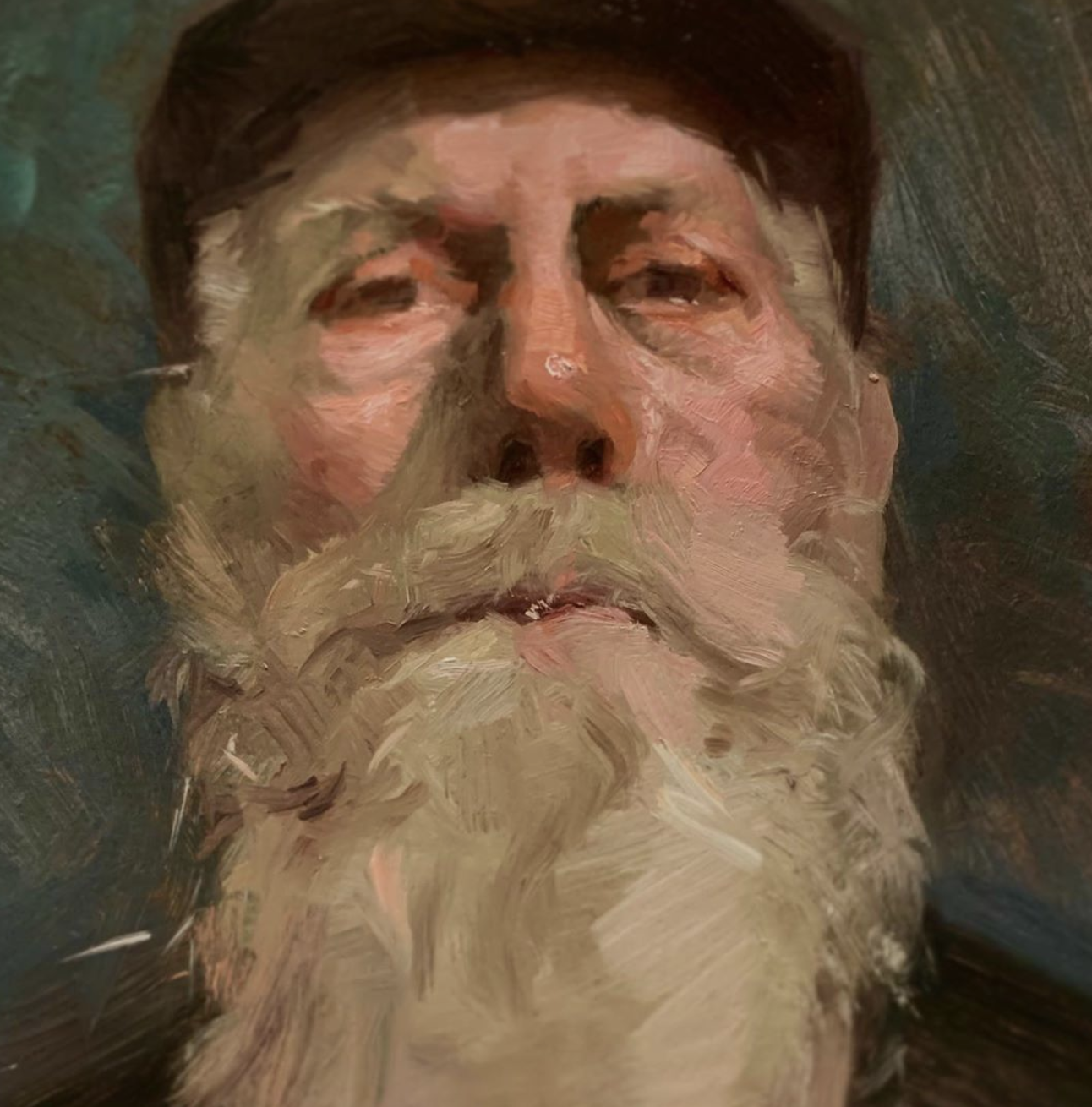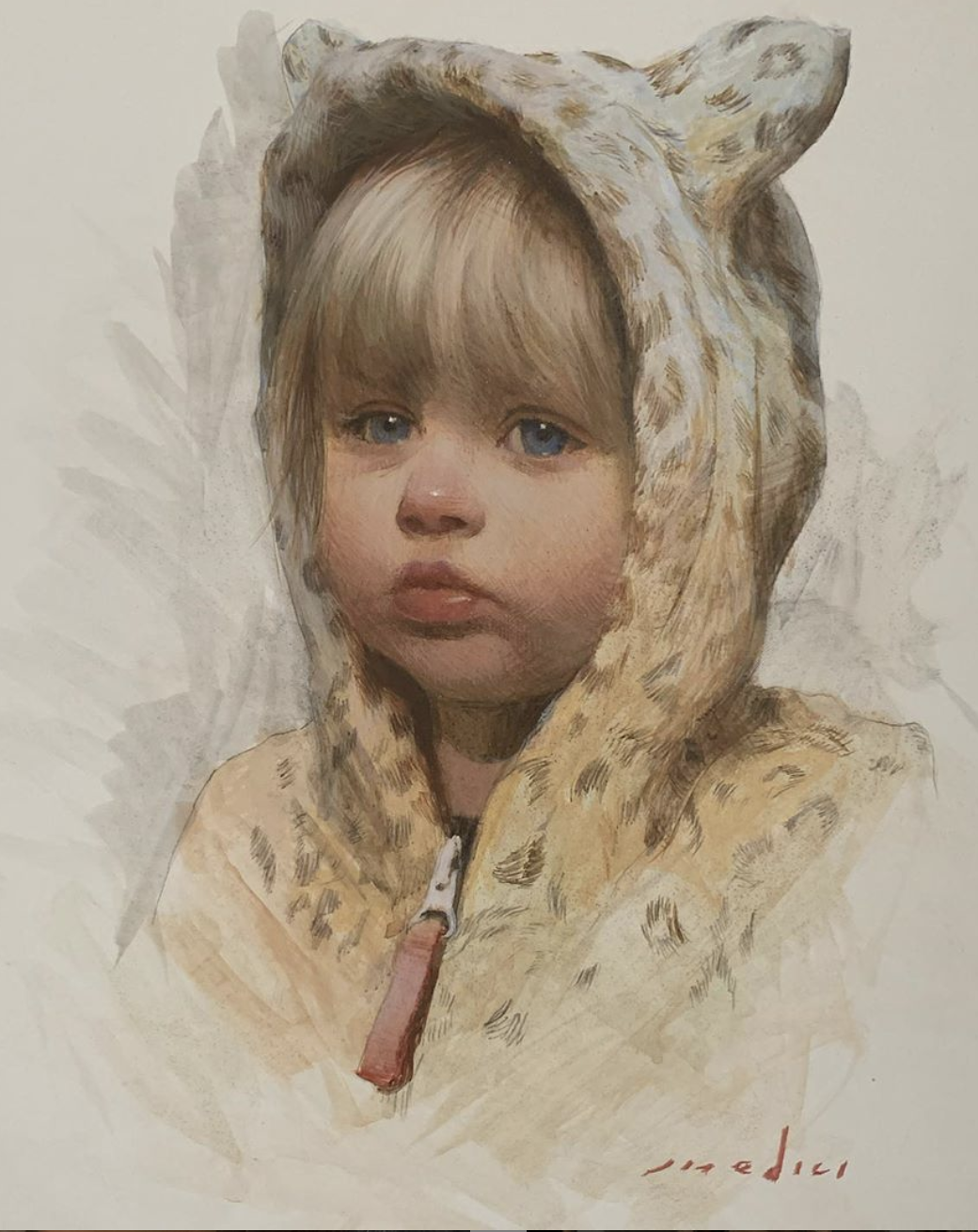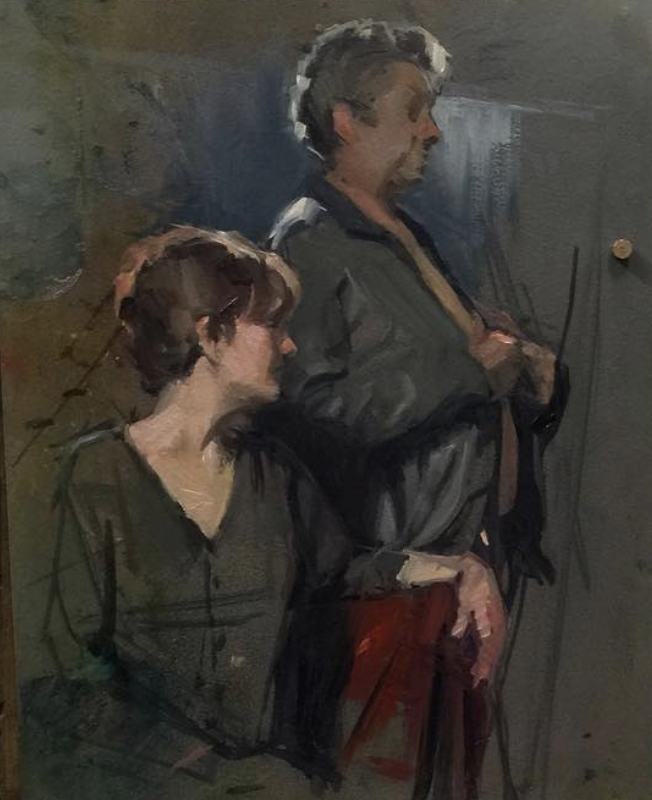Contemporary Realism > Dominique Medici was introduced to our team by Juliette Aristides, who is on the Realism Today advisory board. Be inspired by this exclusive interview with Dominique, who shares her thoughts on using a limited palette, painting alla prima, and meditation.

Cherie Dawn Haas: What’s a common question you hear about painting in general, or about your style or media?
Dominique Medici: What colors I use to mix flesh tones is a common question. I work with a very limited palette, either the Zorn palette or a limited chromatic palette. In either case it is really just a primary palette with black and white. So my response to this question is, unhelpfully, all of the colors.
There is a company that makes a color called Caucasian flesh tone which is quite good for painting sunsets — I joke but really there is no right answer. The same skin under different lighting can be dramatically different. The thing that makes it look like a skin tone is more about the relationship of colors than it is about specific colors. My goal is to distill and organize the information in front of me into manageable steps. I start by looking at the whole composition and asking myself a series of questions.
I break down my composition into three general values: light, mid, and dark. Then I ask, Is the light source warm or cool? Is there a predominant hue or complementary set of colors dominating the composition, and finally how saturated is each of these colors? I find this way of thinking makes sense of an otherwise overwhelming amount of information. With practice we master color theory and learn to see and separate color from the form it represents.

Please tell us about one of your specific paintings.
Here we have a quick study I did of Henry at the Art Students League. When I practice, I like to work with a timer and break my painting process down into four steps: proportion, value, color and edge. I give each step approximately the same amount of time. I teach this way as well. My goal is to work systematically, getting as much likeness and expression as I can without over rendering before the timer goes off. I find there is real beauty in the editing process.
While this 12 x 12 alla prima oil study was done in approximately two hours, I like to work on quicker and longer paintings, ranging from 20 minutes to six hours or more. I try to be intentional with my time. It doesn’t always go to plan, but it sets up a framework to work in, and I feel that leads to more conscious mark making.

What’s a common artistic challenge you face, and how do you overcome it?
There is an important difference between practicing and performing. When I teach, demo, or compete, I am not trying to learn anything new; I’m just performing to the best of my ability. That said, my performance is only as good as the amount of time I practice on a regular basis.
It is essential to keep one’s observation and decision making sharp. Not having enough time to practice is definitely my biggest challenge. The demands that life places on my time and attention are ever growing, and balancing that with professional and personal self-development is definitely a daily challenge.

What’s a common mistake that you see beginning artists make, and how can they avoid it?
Most beginning artists in my experience go through the proportion and drawing stages too quickly and rush into details too soon. I get it, there is something compelling about the surface; it attracts us and it is the first point of contact for our eyes. But after some time practicing we begin to realize that the beginning of the painting is really important, and that getting the proportions, big shapes, and the breakdown of light and shade are key for a successful painting.

Please tell us why you’re drawn to the alla prima style in particular, and what you love about egg tempera in comparison to other media.
What I like about oil painting and particularly about alla prima is that it is the perfect balance of skill and spontaneity. It is very much like a sport — the timer and one’s skills are the opposing teams, and whether the painting will turn out well by the end of the session is unknown. There is a thrill in trying to push one’s skills as far as possible within a limited time frame.
As a counterpoint, egg tempera is slow, systematic, very linear, and thin. It is like drawing with paint. The opacity is achieved by countless thin layers of paint; the result has a beautiful translucent glow, which is unique to tempera (see “Bella”). It is considered to be the most archival medium. I love the artisanal practice of making traditional gesso panels, hand grinding pigments, and working very systematically. It has a meditative quality to it. Oil and tempera appeal to different parts of my personality, but are both equally fulfilling.

You’ve told me that you practice meditation. Can you share how you incorporate this into your art practice?
Gratefully, I learned how to mediate in high school from my best friend’s father. Once a week after school he would instruct us and we would practice. As an emotionally troubled teen, it was the first time that I could see some space between my sense of self and the intensity of emotions and beliefs held. That little space in time grew and with it my ability to stay present, focus, and process my daily experiences.
In many ways painting and teaching are outward forms of meditation. In other words, I aim to give full attention and care to what I am doing and people I interact with. The older I get, the less I see a difference between my day-to-day life, work, and morals. Living and working skillfully, remembering the big picture, and not getting caught up in the unnecessary is as much an aim of meditation as it is of a good painting. All good principles of painting and drawing are really life principles.
I feel that mediation has indirectly led me to teaching. Without getting too woo-woo, if I haven’t already, mediation brings a certain level of peace and happiness, which in turn, I feel, leads to an appreciation that we are all in this together and it is in our interest to make our surrounding and exchanges with each other as fulfilling, mutually beneficial, and beautiful as possible. It’s always my hope that my paintings give this feeling, but moreover this sentiment certainly motivates me to teach. Being engaged in a profession where we pass down the ideas and techniques of a rich tradition of painting and drawing feels like a meaningful contribution on a daily basis.

What’s the best advice you’ve heard, or your favorite advice to give?
I like Leonardo da Vinci’s quote: “Simplicity is the ultimate sophistication.”
About seven years ago I started teaching portrait painting with a full palette. My students, who were mostly beginner and intermediate, could manage the drawing with some effort, but color was overwhelming. I realized that having more colors on the palette isn’t necessarily an advantage. I decided to adopt a limited palette of chromatic primaries plus black and white. First off, I liked having less to carry, especially when traveling, not to mention the savings are nice too. More importantly, this approach helped students to better understand color relationships and theory and demystified the color-mixing process. To get these stacked benefits without sacrificing expression is a big win.


Connect with Dominique Medici
Website | Instagram
Related Articles
> Another Milestone for Contemporary Realism
> The Contemporary Realism of Vincent Figliola





